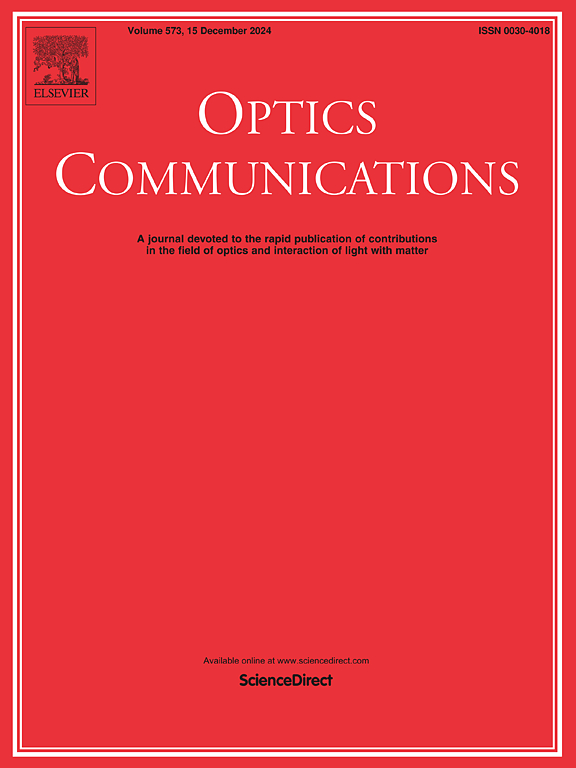Silicon-on-insulator coupled waveguide-resonator sensor: Trade-off between sensitivity and other performance parameters
IF 2.2
3区 物理与天体物理
Q2 OPTICS
引用次数: 0
Abstract
This work presents a novel silicon-on-insulator (SOI)-based coupled waveguide-resonator sensor integrated with a hybrid plasmonic waveguide (HPWG) for refractive index sensing. Unlike conventional dielectric waveguide sensors, the proposed design incorporates a metal-dielectric HPWG segment within the resonant cavity, significantly enhancing light–matter interaction and thus improving sensitivity. This hybrid integration achieves a maximum sensitivity of 210 nm/RIU, surpassing that of standard waveguide configurations. However, this improvement comes with trade-offs in terms of reduced figure of merit (FOM), quality factor (Q-factor), and increased limit of detection (LOD), due to higher propagation losses. The study systematically analyzes and optimizes the interplay between sensitivity, FOM, Q-factor, and LOD, offering a balanced approach for high-performance photonic biosensing applications.
绝缘体上硅耦合波导谐振器传感器:灵敏度和其他性能参数之间的权衡
本文提出了一种新型的基于绝缘体上硅(SOI)的耦合波导谐振器传感器,该传感器集成了用于折射率传感的混合等离子体波导(HPWG)。与传统的介电波导传感器不同,该设计在谐振腔内集成了金属-介电HPWG段,显著增强了光-物质相互作用,从而提高了灵敏度。这种混合集成实现了210 nm/RIU的最大灵敏度,超过了标准波导配置。然而,由于传播损耗的增加,这种改进需要在性能值(FOM)、质量因子(Q-factor)的降低和检测极限(LOD)的增加方面进行权衡。该研究系统地分析和优化了灵敏度、FOM、q因子和LOD之间的相互作用,为高性能光子生物传感应用提供了一种平衡的方法。
本文章由计算机程序翻译,如有差异,请以英文原文为准。
求助全文
约1分钟内获得全文
求助全文
来源期刊

Optics Communications
物理-光学
CiteScore
5.10
自引率
8.30%
发文量
681
审稿时长
38 days
期刊介绍:
Optics Communications invites original and timely contributions containing new results in various fields of optics and photonics. The journal considers theoretical and experimental research in areas ranging from the fundamental properties of light to technological applications. Topics covered include classical and quantum optics, optical physics and light-matter interactions, lasers, imaging, guided-wave optics and optical information processing. Manuscripts should offer clear evidence of novelty and significance. Papers concentrating on mathematical and computational issues, with limited connection to optics, are not suitable for publication in the Journal. Similarly, small technical advances, or papers concerned only with engineering applications or issues of materials science fall outside the journal scope.
 求助内容:
求助内容: 应助结果提醒方式:
应助结果提醒方式:


